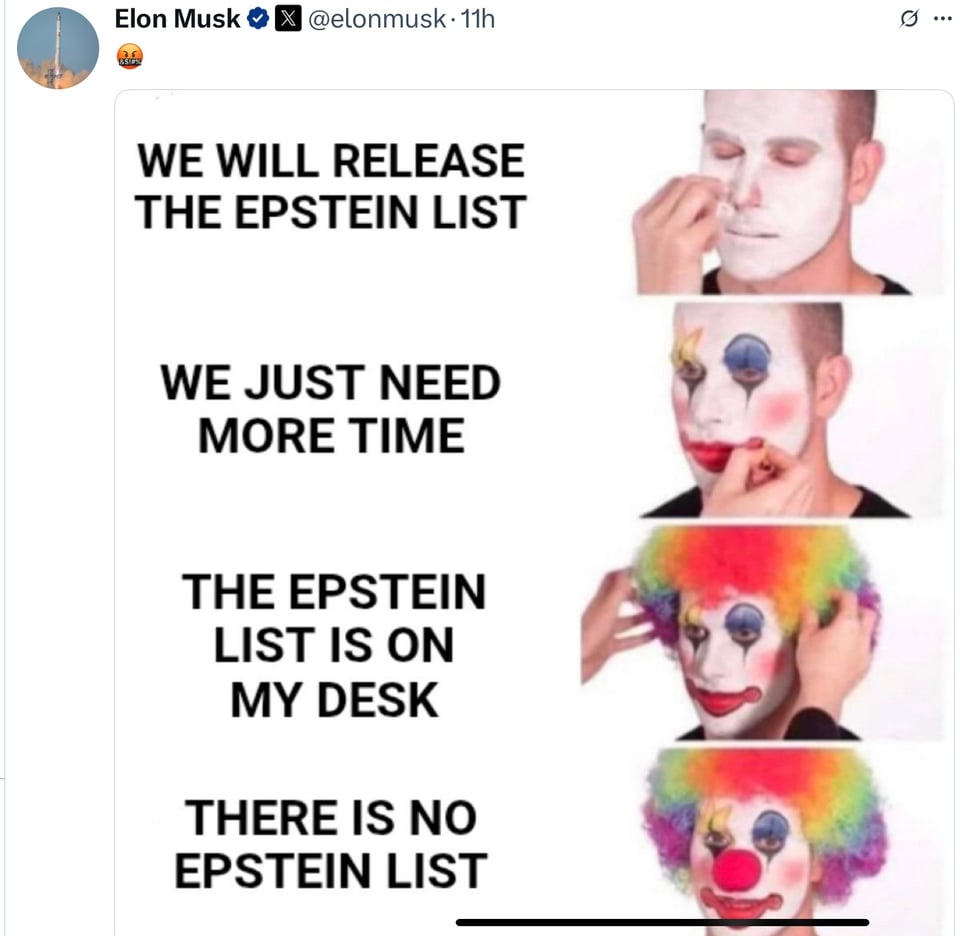Tuesday, July 8, 2025. Annette’s Roundup for Democracy.
New York Times, Monday, July 7, 2025.
On the floods in Texas.
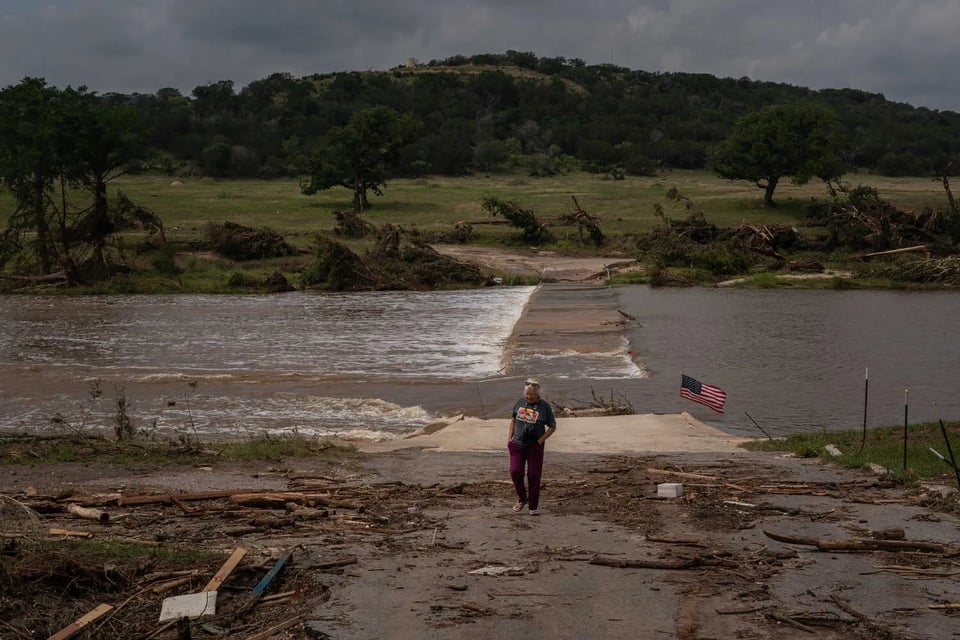
Government’s role may become clearer to skeptics.
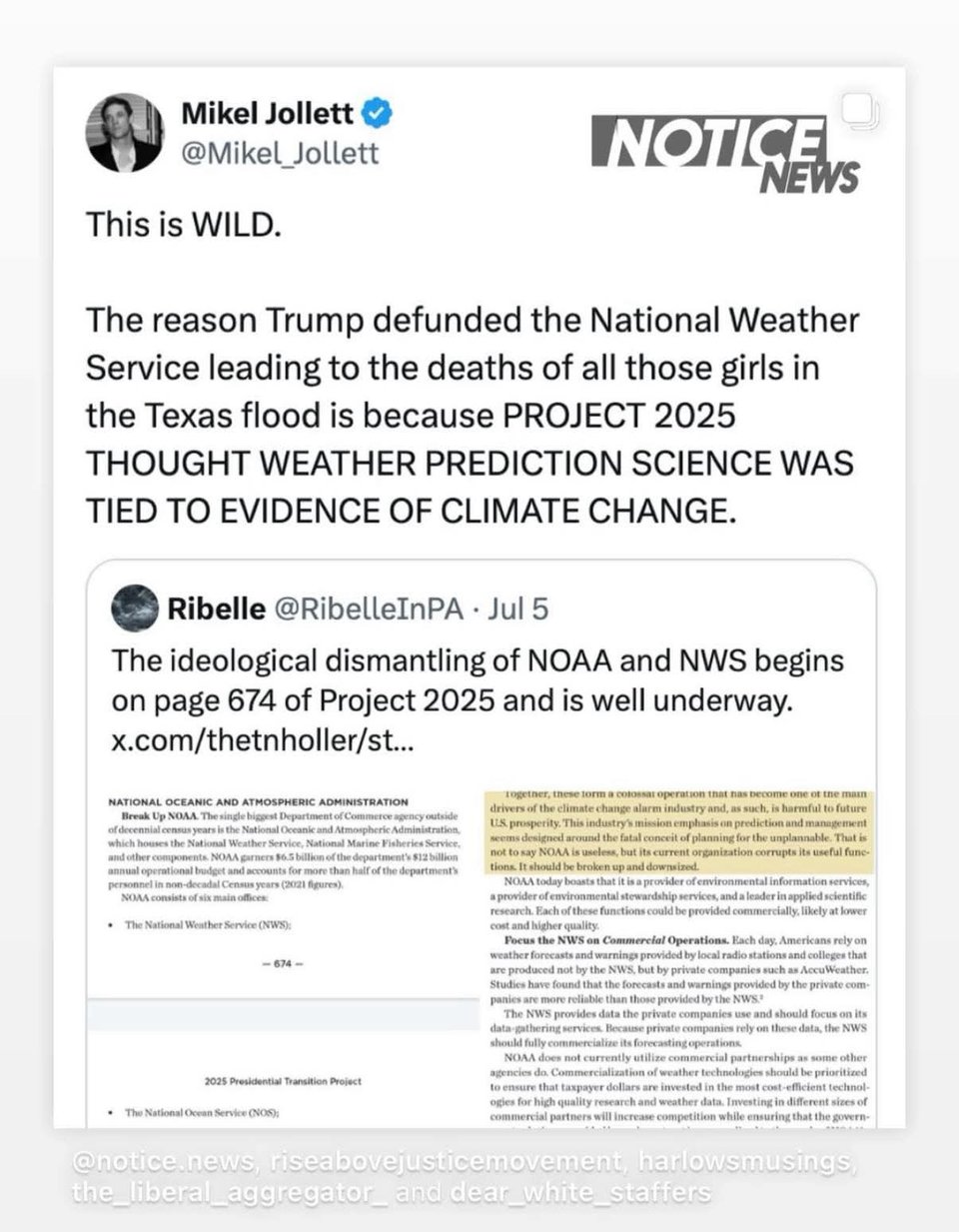
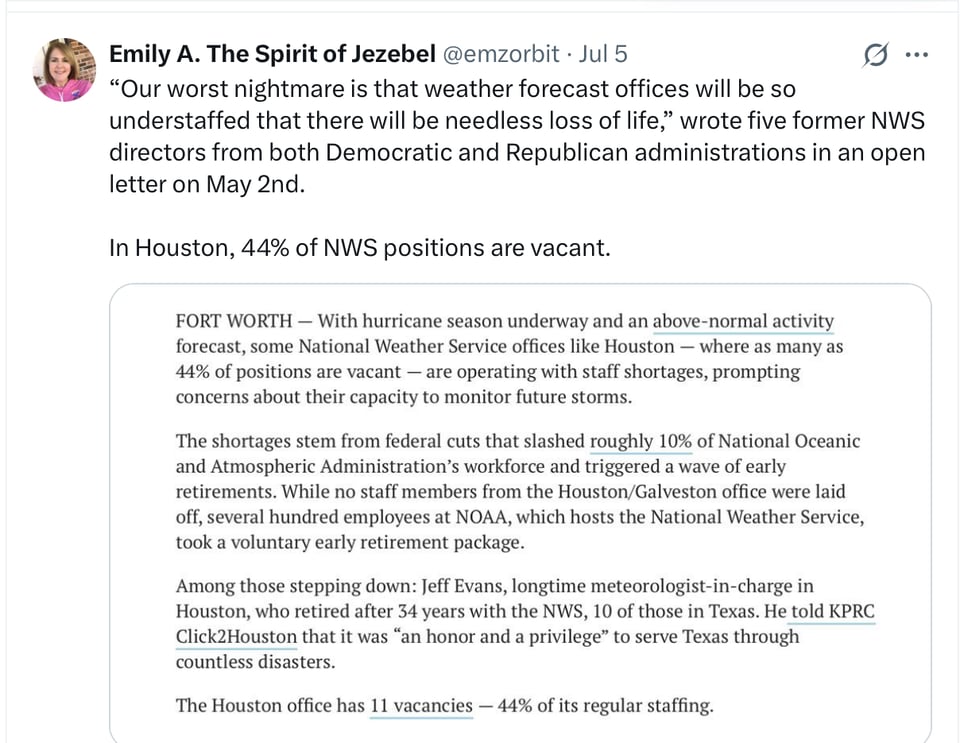
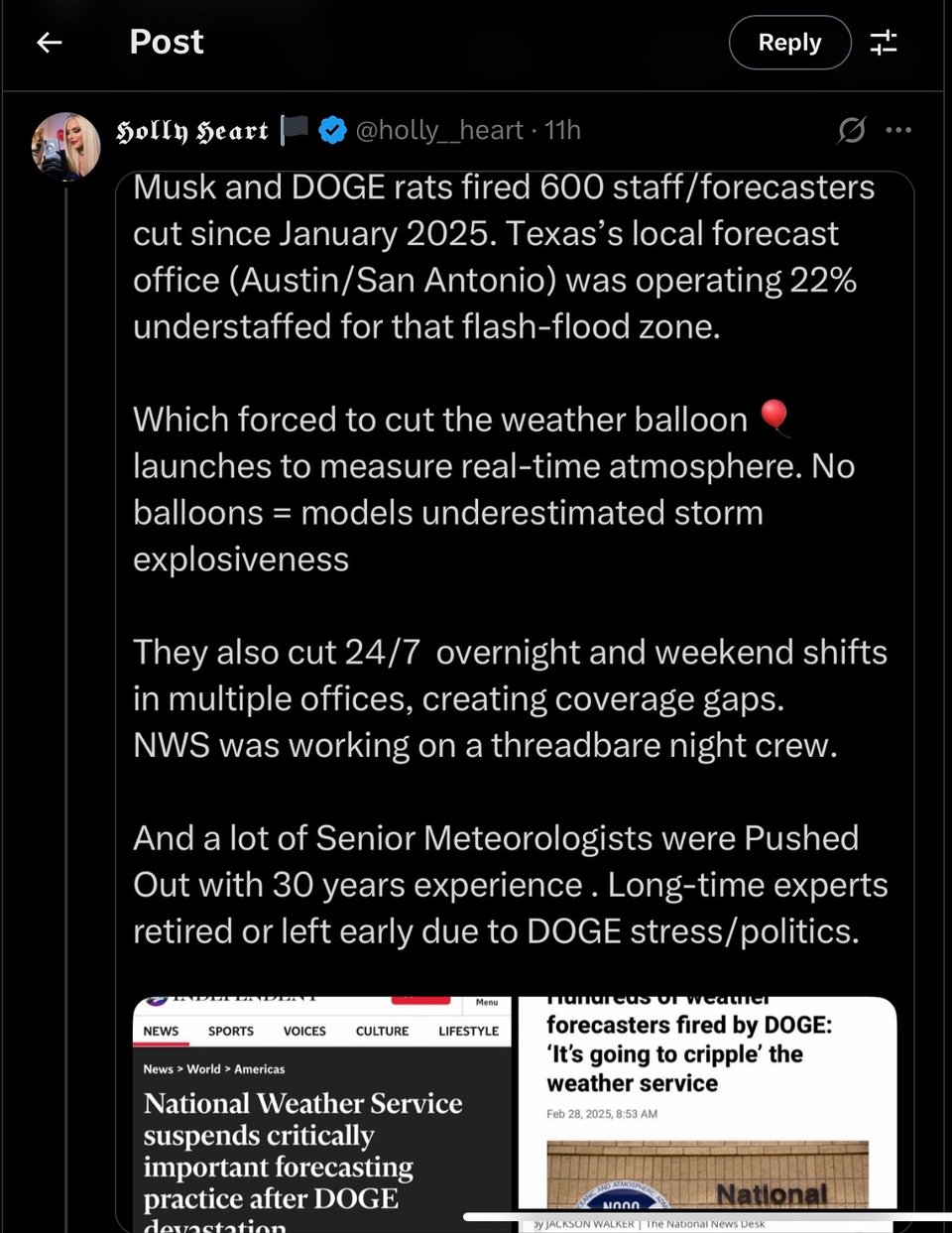
Scientific American issued this warning on May 13. 👇
How Trump’s National Weather Service Cuts Could Cost Lives - Scientific American
Weather experts warn that staff cuts at the National Weather Service that have been made by the Trump administration are a danger to public safety as tornadoes, hurricanes and heat loom this spring and summer.
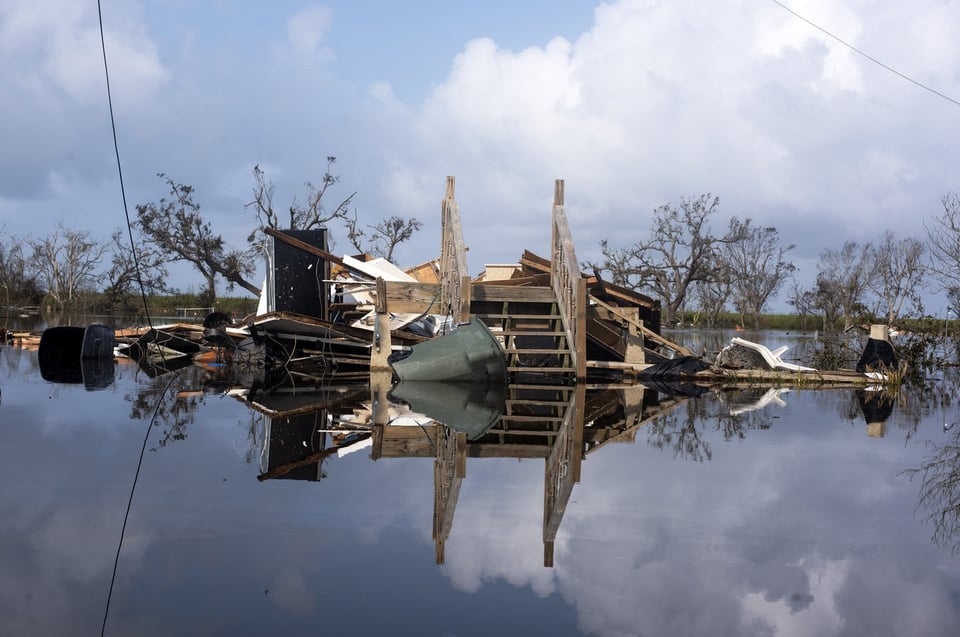
Just more than 100 years ago, on March 18, 1925, a tornado slashed across the U.S. Midwest with no warning at all and killed 695 people—a massive number for a single outbreak. Today those in a twister’s path get a take-cover notice eight to 18 minutes before a strike on average. And as recently as 1992, what looked like a minor tropical disturbance intensified with shocking speed into Hurricane Andrew. There was little time to prepare for the storm, and much of the resulting property damage in South Florida was massive. But by last year, forecasters could give several days’ warning that the then approaching storms Helene and Milton were likely to abruptly morph into monsters.
Such improvements have cumulatively saved thousands of lives and likely hundreds of billions of dollars across the U.S. And they happened only through concerted federal government investment in studying weather events, improving computer forecast models, and making continent- and ocean-spanning efforts to collect the data that make those forecasts possible. Now meteorology experts are urgently warning that the Trump administration’s staff firings and funding cuts at the National Weather Service (and its parent, the National Oceanic and Atmospheric Administration) threaten to disrupt these crucial operations and turn back the clock on forecasting.
“Our worst nightmare is that weather forecast offices will be so understaffed that there will be needless loss of life,” wrote five former NWS directors from both Democratic and Republican administrations in an open letter on May 2.
Ultimately, storm experts say, disruption caused by existing and proposed cuts will hit multiple fronts. An understaffed and underfunded NWS could mean that a tornado warning doesn’t come in time, that a hurricane forecast is off just enough so that the wrong coastal areas are evacuated or that flights are less likely to be routed around turbulence. “The net result is going to be massive economic harm,” said climate scientist Daniel Swain during one of his regular talks hosted on YouTube. “As we break these things, eventually it will become painfully and unignorably obvious what we’ve broken and how important it was. And it’s going to be unbelievably expensive in the scramble to try and get it back—and we might not be able to get it back.”
THE NWS’S BUDGET PAYS FOR WEATHER SERVICES THAT BENEFIT INDUSTRY
For the past 20 years, a little more than 4,000 NWS staff members have put together 24-7 forecasts for the country’s approximately 300 million people every day of the year. “We have [a more] efficient level of [staff compared] to the number of people we’re serving than any other country in the world by two orders of magnitude,” says Louis Uccellini, who was NWS director from 2013 to 2022 and signed the open letter.
The NWS punches above its economic weight, too: it costs the average American about $4 per year. “It’s a cup of coffee,” says JoAnn Becker, president of the National Weather Service Employees Organization, a union that represents the NWS and several NOAA offices. With one third of the U.S. economy—from farming to trucking to tourism—being sensitive to weather and climate, the NWS provides an overall benefit of $100 billion to the economy. This is roughly 10 times what the service costs to run, according to an American Meteorological Society white paper. Recent improvements to hurricane forecasts alone have saved up to $5 billion for each hurricane that hit the U.S. since 2007, according to a report by the National Bureau of Economic Research—a nonpartisan, nonprofit economic research organization. In comparison, the NWS’s entire budget for 2024 was less than $1.4 billion.
With the growing number of disasters that cost the country $1 billion or more in damages, weather experts have advocated for increasing the agency’s staff and budget. “NOAA is a $12-billion agency trapped in a $5-and-a-half-billion budget,” said Craig McLean, then acting chief scientist of NOAA, in testimony to Congress three years ago.
Even before President Donald Trump took office, the NWS was already about 5 percent below the staffing level the service has considered adequate as it scrambled to catch up to a spate of retirements. After the NWS’s first wave of firings and early retirements under the Trump administration, staffing at the service’s 122 field offices across the country has dropped to a 19 percent vacancy rate. Fifty-two offices are now considered “critically understaffed,” meaning a shortage of more than 20 percent. Some branches are down by more than 40 percent. “We’re small offices,” Becker says. Each weather forecast office has about 25 to 30 people. “When you’re down four people, it starts to hurt,” she adds. “There comes a point where you don’t have enough people to cover everything.”
The lack of noticeable degradations in forecast quality so far is “because of the valiant efforts of the people who remain in these now critically understaffed roles in field offices,” Swain said in his recent video. “But the cracks are really now starting to show.” (Scientific American)
One more thing.
The painful message.
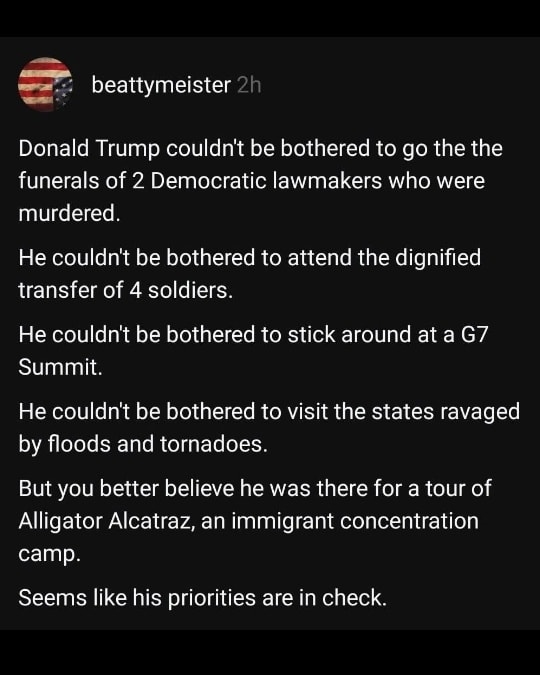
Yes, and how many ears must one man have
Before he can hear people cry?
Yes, and how many deaths will it take 'til he knows.
That too many people have died?
The answer, my friend, is blowin' in the wind
The answer is blowin' in the wind.
What you can do!
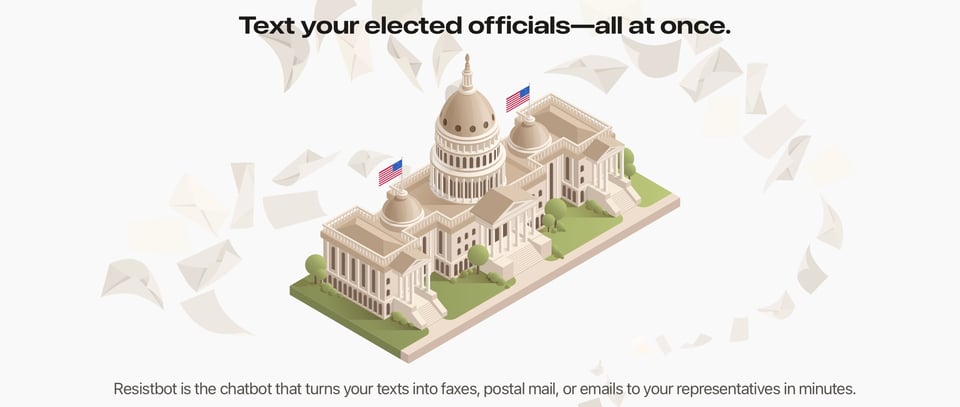
Resistbot is an app that enables you to text your Elected Officials all at once.
It turns your texts into faxes, postal mail or emails too. Check it out, sign up, USE IT!
One more thing.
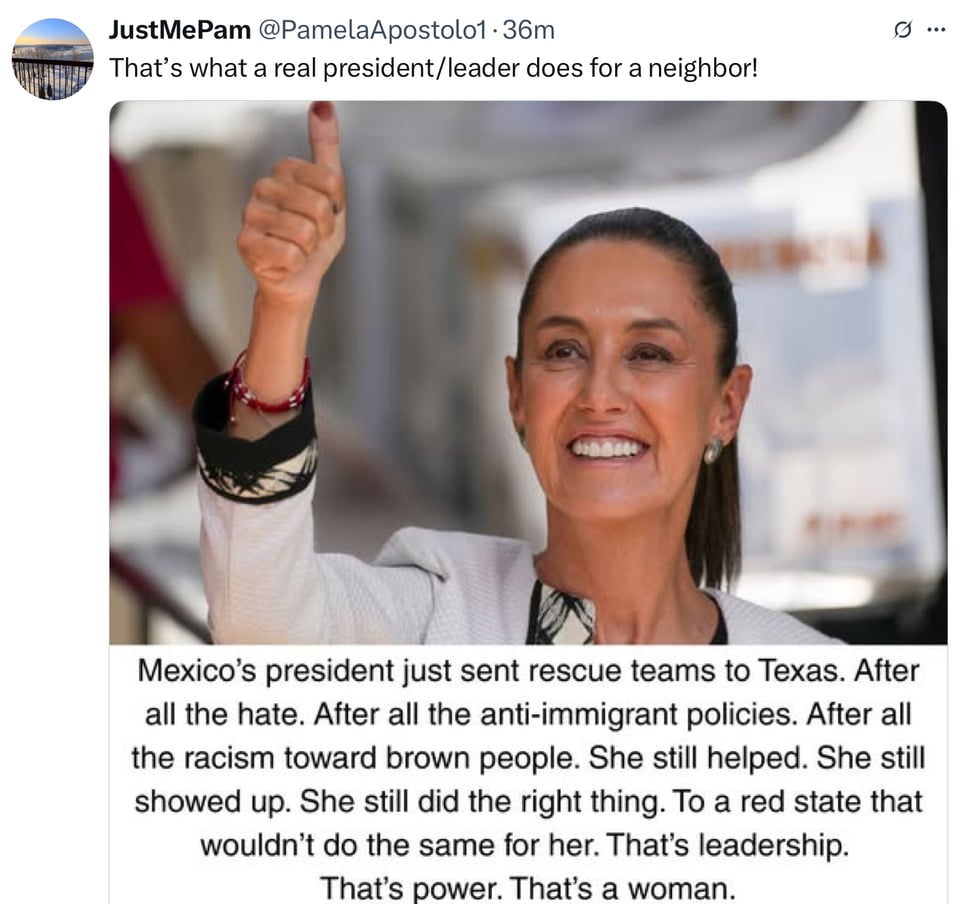
2026 is around the corner.
Our candidates and we will have to educate America about the truck that is about to hit them.
Trump bill's health effects won't be felt until after midterms.
President Trump's tax and spending bill sets in motion nearly $1 trillion in cuts to Medicaid and other health policy changes that could loom over the midterm elections.
But the real effects likely won't be felt until well after the ballots are cast.
Why it matters: Despite negative polls and headlines, bill supporters could be insulated from political blame by a slow drip of policy changes that will play out over the next decade — a contrast to when the GOP tried to repeal Obamacare in 2017.
"Republicans backloaded a lot of the Medicaid and ACA cuts," said Larry Levitt, executive vice president at KFF. "There will be few tangible effects in health care from this bill before the midterms."
That creates a messaging challenge for Democrats, he added. "There's not going to be a day where everyone wakes up and all of a sudden ... more people are uninsured."
What's inside: Medicaid work requirements, which account for many of the nearly 12 million people projected to lose coverage under the bill, generally won't kick in until 2027, and some states could get extensions.
Though beneficiaries will get warnings ahead of time, able-bodied recipients ages 19 to 64 wouldn't actually be dropped from program rolls for failure to meet or properly report the required 80 hours a month until after November 2026.
The bill also increases the frequency of Medicaid eligibility checks to every six months, starting on Dec. 31, 2026. People in the Medicaid expansion population who retain coverage under the new system could have to pay up to $35 in cost-sharing per service starting in October 2028.
The phasedown of Medicaid provider taxes and state-directed payments, which states use to help fund their share of program costs and which hospitals in particular have come to rely on for funding, only begins in 2028.
The legislation's $930 billion cut to federal Medicaid funding will likely force states to make corresponding cuts to their programs or pick up a greater share of obligations, but those wouldn't take effect right away, either.
Yes, but: People covered through the Affordable Care Act exchanges will see changes more swiftly. The bill does not extend the Biden-era enhanced premium subsidies, which are set to expire on Jan. 1, 2026. The GOP-led Congress still can do so, but has shown little appetite so far.
Obamacare premiums would increase by more than 75% on average for enrollees next year without the enhanced subsidies.
That would give Democrats "a very potent talking point going into the midterms," Levitt noted.
Medicaid funding of Planned Parenthood will also be cut off for next year under the bill — a change the family planning organization said could result in the closure of nearly 200 clinics.
Restrictions on which lawfully residing immigrants can access Medicaid will go into effect on Oct. 1, 2026, just before the primaries. (Axios)
The Jeffrey Epstein Question.
Who would ever think I would agree with Elon Musk on anything.
